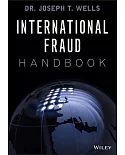This book addresses the evolution of the strategies, structures, ownership patterns and performances of large European corporations since the early 1960s. The authors study large and small
countries, in order to understand how the process of economic integration has affected the patterns of growth and the structural characteristics of the largest firms. Drawing both on
extensive databases and on case studies, the contributions in this volume address the peculiar specificities of large firms in different national contexts, adopting a longitudinal, long term
perspective.
This volume delivers the first results of an international, collective research effort undertaken by several national teams. The ’Mapping Corporate Europe’ project aims to provide a detailed
account of the structural traits of the European Corporation in a framework which includes (i) a chronological analysis over 50 years, starting with the Rome treaty in 1957; (ii) geographical
extension beyond previous analyses for France, Germany and the UK, by including smaller countries; (iii) firms from other industries in addition to manufacturing companies; and (iv) attention
to internationalisation of European firms. These analyses form the basis of a rich description of the developments of large European corporations over the past five decades, using both
qualitative and quantitative approaches.
This book was originally published as a special issue of Business History.





















